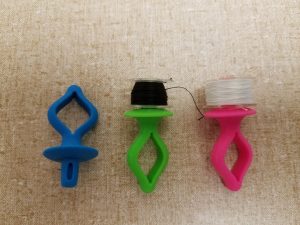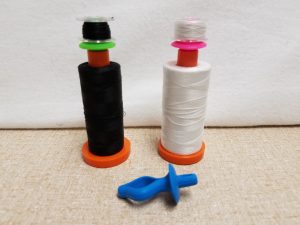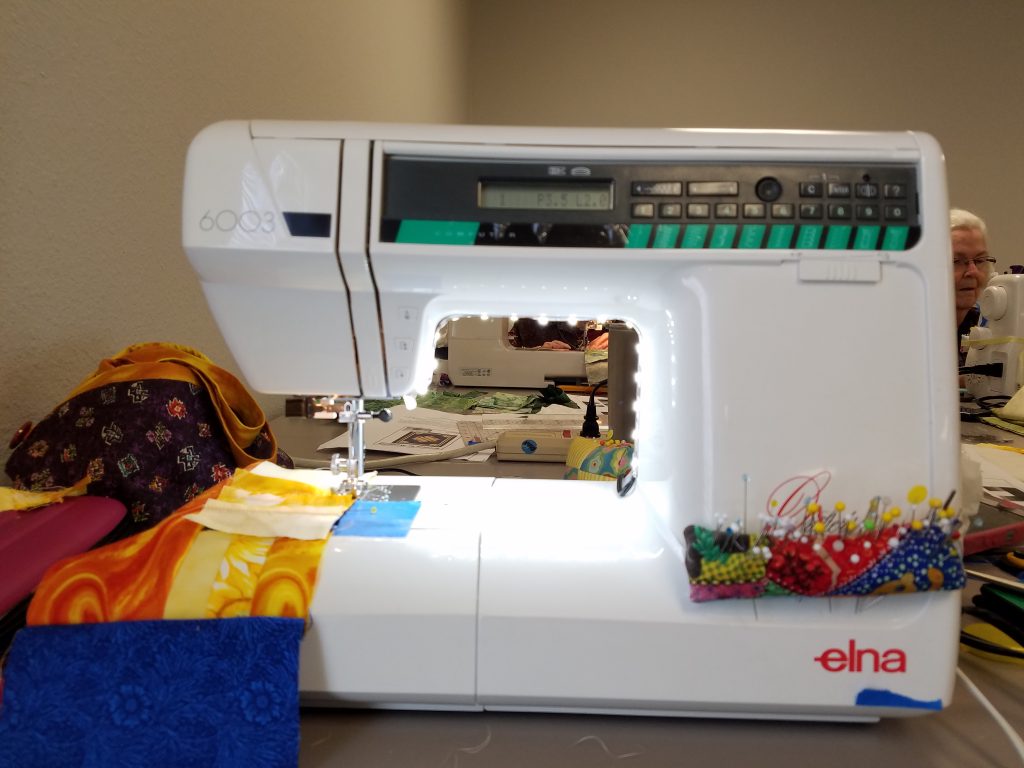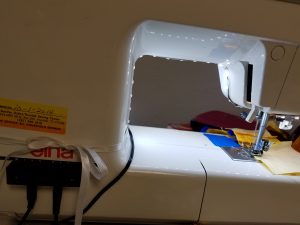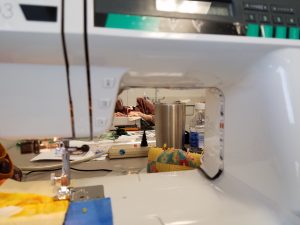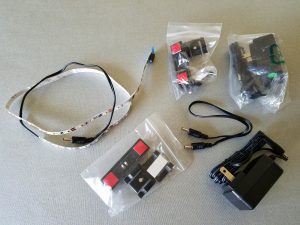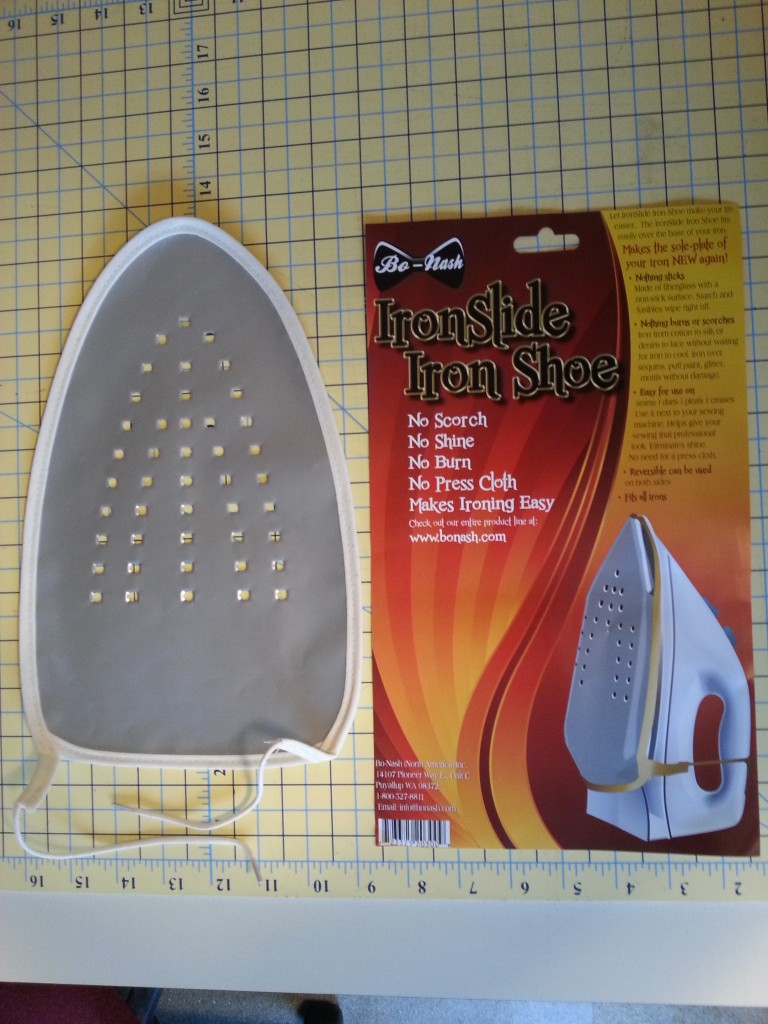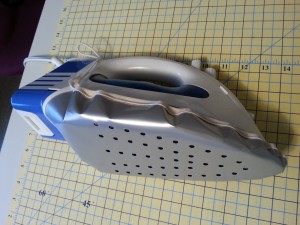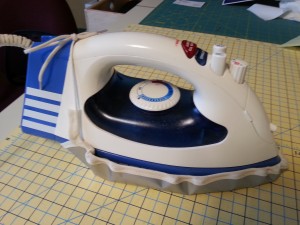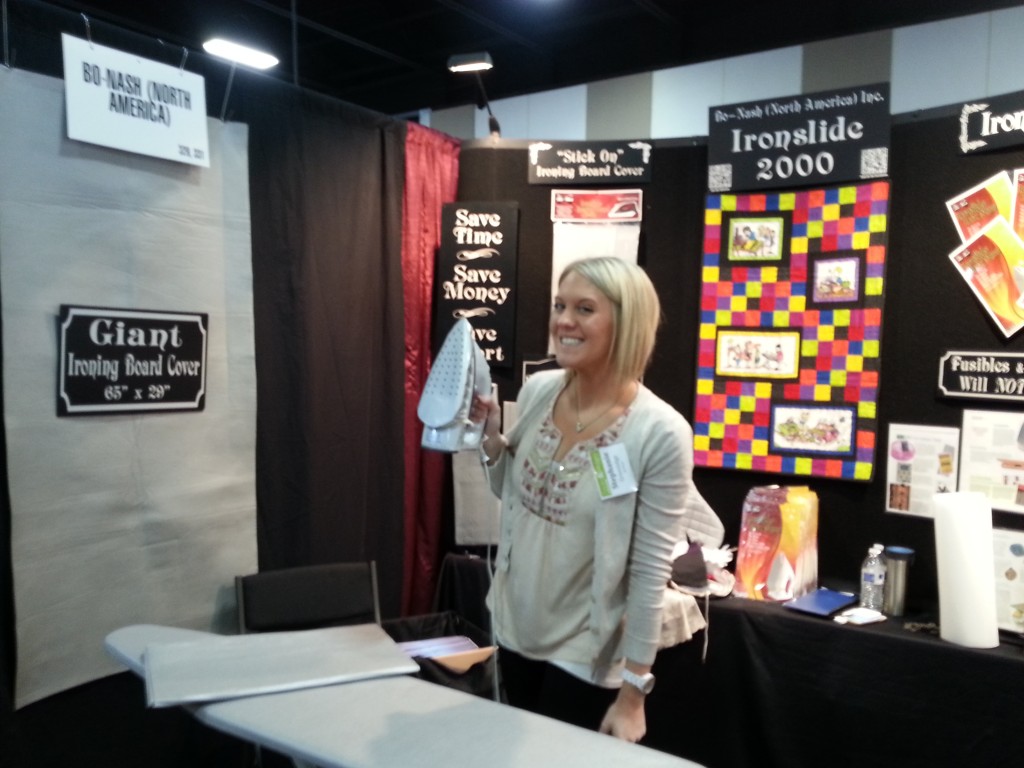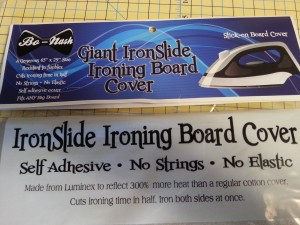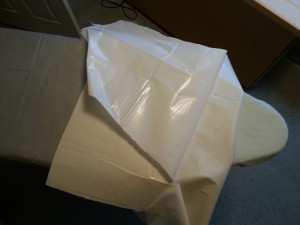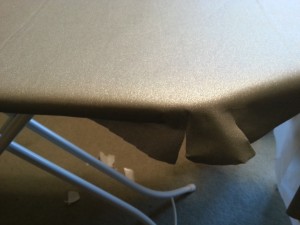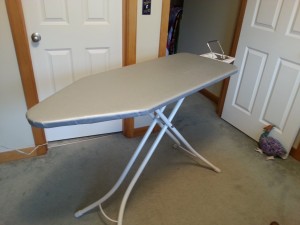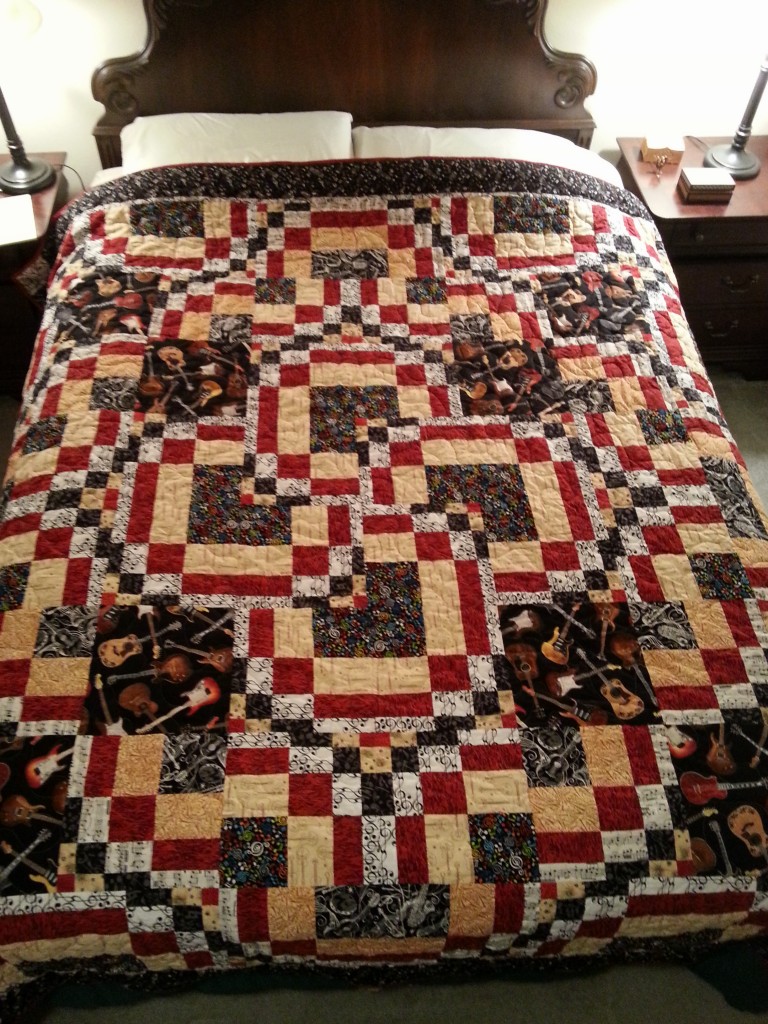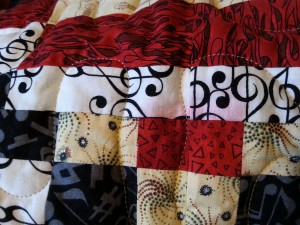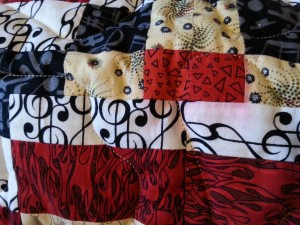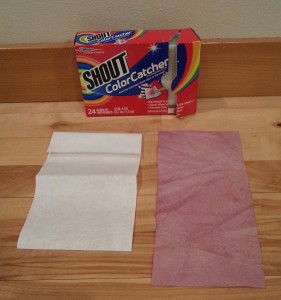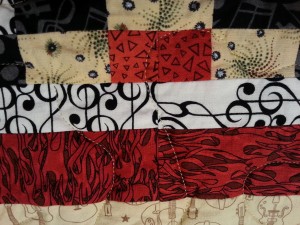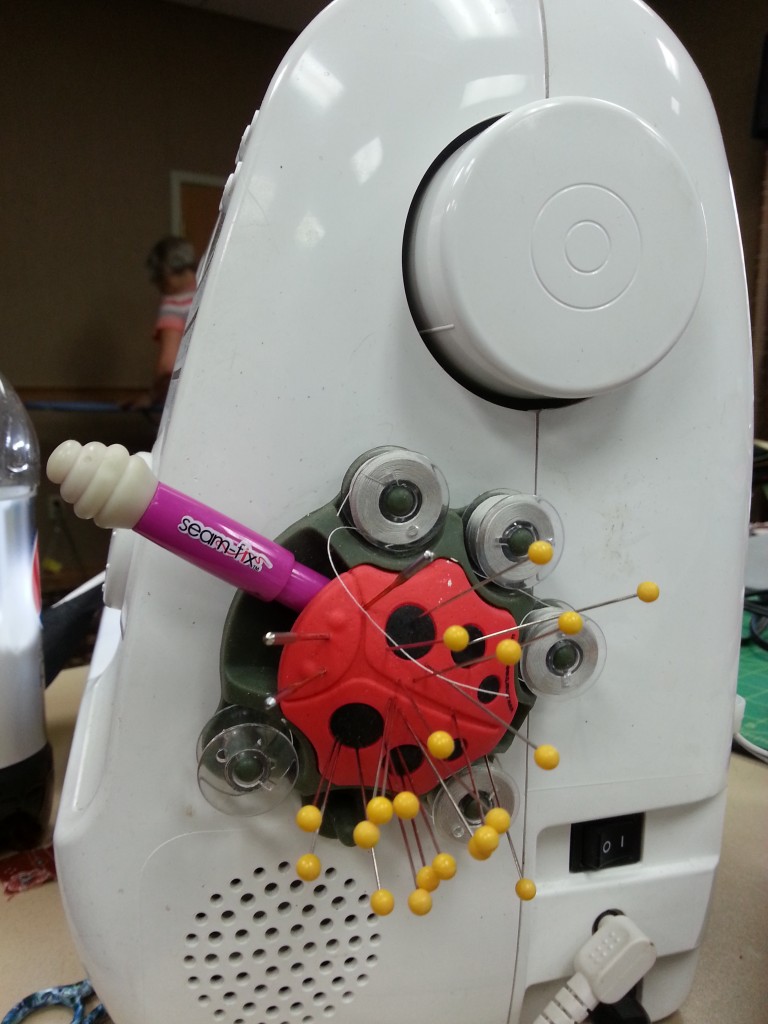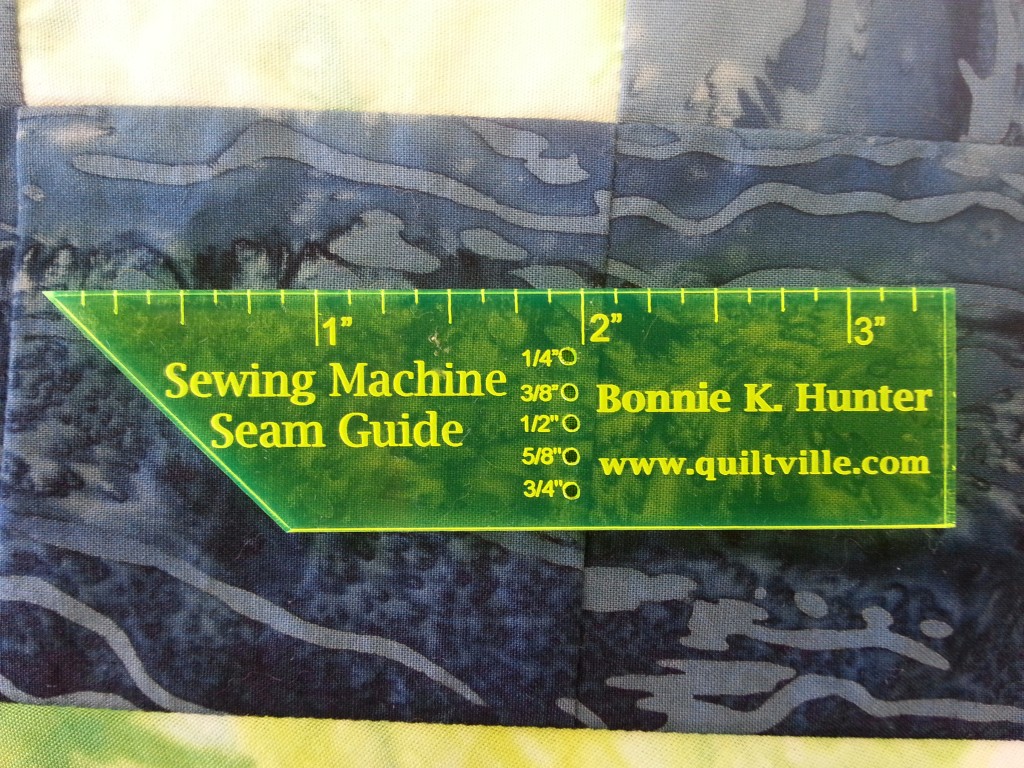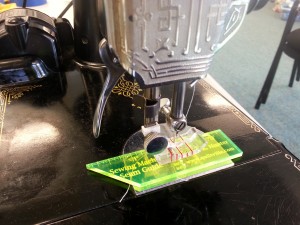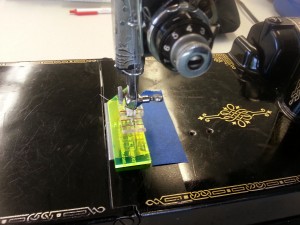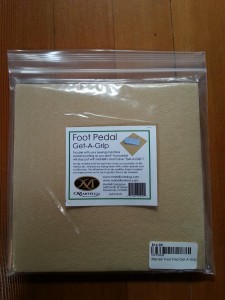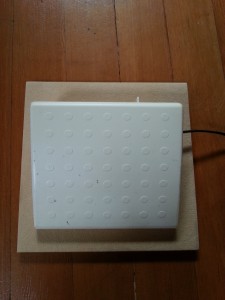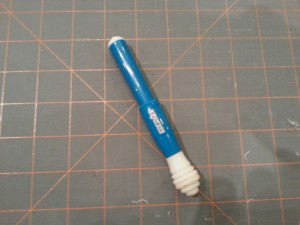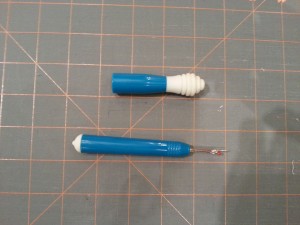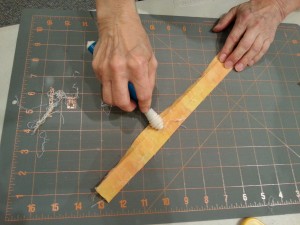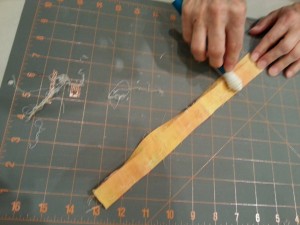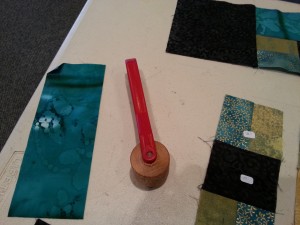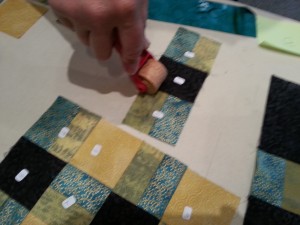When I was teaching in Spokane, WA, one of my students brought an ingenious portable design wall to class. She said that quilt teacher Pat Speth had given her the instructions. I contacted Pat and she kindly agreed to allow me to share these with you. See Pat’s blog for more pictures.
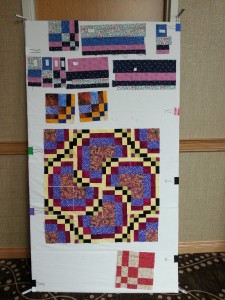
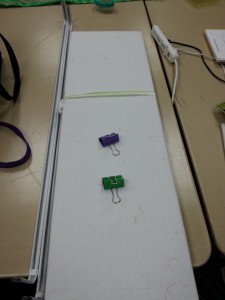
Pat developed this design wall back in 1995 and has been sharing it in her workshops ever since. It’s lightweight, inexpensive, and very portable. Here are the supplies you will need:
Dressmaker’s cardboard cutting board (the kind that folds up for storage), when folded measures 14″ x 40″
Two curtain rods that extend to at least 72″ (the white metal ones that curve on each end)
Piece of flannel 44″ x 80″ or a flannel-backed vinyl tablecloth
10–12 large binder clips 2″ size (from the office supply store)
Double sided carpet tape
Cover the backside of the design wall with the flannel – it will fold up with the grid side on the outside so the flannel will stay cleaner longer. With the backside facing up, apply the double-stick carpet tape along one long edge at a time. If your flannel is wider than the design wall, apply the tape to the grid-side and attach a couple of inches of flannel to the front (or whatever you need to make it fit). Press the flannel onto the tape, allowing it to extend past the cutting board at the top and bottom by a couple of inches.Tape both sides, then turn the board over. Apply tape to the top, press the flannel into place, and repeat on the bottom edge.
When all the edges are taped down you are ready to attach the curtain rods. Extend curtain rods to 6′ and lay them under the long sides, one side at a time.Attach binder clips to hold the cutting board to the curtain rod.
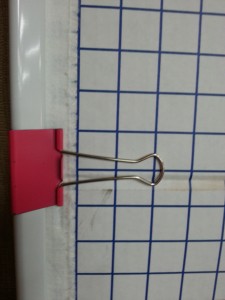
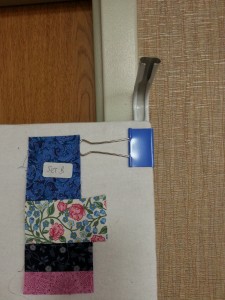
Use five or six binder clips along each side. Finish attaching the clips to one side, then do the other. If you are short of wall space for a permanent design wall, you can create the wall space by leaning these up against almost anything, blocking windows or doors. For larger quilts, simply set two or three of these design walls next to each other.
